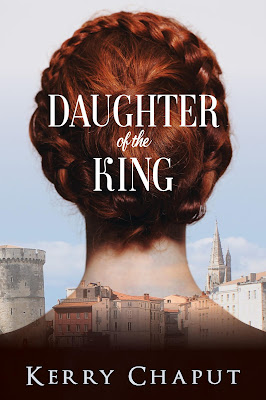 |
| Welcome to my Blog! Wander through wonderful worlds real and fictional, meet interesting people, visit exciting places and find a few good books to enjoy along the way! |
The Prisoner of Paradise is my debut novel, published by TouchPoint Press.
When Nick & Julia O’Connor, an American couple, travel to Venice, Italy on holiday, Nick comes to believe that his true soul mate is not his wife, but a woman trapped in the world’s largest oil painting.
Though Julia worries he suffers from delusions, Nick discovers a secret society that has developed a method of extracting people’s souls whom they deem to be evil. They imprison those souls in Paradise, painted by Jacopo Tintoretto in the 16th century. Nick goes on a quest to save his soul mate from eternal purgatory but liberating her means freeing all the souls—something the secret society will never let happen.
The whole of the book is set in Venice. Constructed of 120 manmade islands and 177 canals, Venice is like nowhere else on Earth and is not only a location in The Prisoner of Paradise, but a character.
At times a protagonist and other times an antagonist, Nick and Julia are often lost in the maze-like city, as they need to navigate the bridges and narrow alleys as much as they need to navigate the multiple obstacles put in the way of their goals.
Venice is one of the most picturesque cities on the planet, from the world-famous gondoliers and architecture to tiny squares surrounded by five-hundred-year-old buildings that are sinking in a slow death. Julia is a photographer and never fails to capture a moment.
As
the characters delve deeper in their adventure, they explore additional
locations in Venice, including these incredible places:
The Doge’s Palace
Known in Italian as Il Palazzo Ducale, The Doge’s Palace is a thousand-year-old building located on the edge of St. Mark’s Square. Now a museum, it was once the seat of government of the Venetian Republic. It was home to the doge (the elected leader), as well as the meeting place for senators, making it a combination of the United States Capitol Building and the White House—but four times as old.
Salvatore
della Porta, the antagonist of the book, is the director of the museum. He
takes his job incredibly seriously and treats the building like his treasured
home—if not castle.
The Doge’s Palace is also the location of the painting Paradise.
Spanning an entire wall of the Great Council Room, what used to be the largest
room in all of Europe, Paradise is seventy-five feet wide by forty feet
high, situated twelve feet off the floor.
The massive room is covered in Renaissance art and enthralls Nick and Julia, who have never seen anything like it.
But it’s Paradise—or more specifically, a woman in Paradise—who mesmerizes Nick.
The Biennale
The Venice Biennale is the location and name of a biannual art exhibition hosting the world’s top contemporary art. Established in 1895, it’s one of the most prestigious art events in the world.
Since the Biennale features contemporary art—much of it experimental and avant-garde—it’s juxtaposed with the omnipresent Renaissance art located elsewhere in the city
Venice is a city of dualities and duality is very much a theme of the book.
Julia is a fine arts photographer with a photograph in the exhibition. She’s over the moon about this potential leap forward in her career, but when she meets with a New York gallery owner, Nick is lured to the woman in Paradise
Poveglia Island
 |
| Image attribution: Marco Usan, CC BY 3.0 <https://creativecommons.org/licenses/by/3.0>, via Wikimedia Commons |
Nestled in the Venetian Lagoon between Venice and the Italian mainland, Poveglia Island is known as the world’s most haunted island. Infamous for its abandoned mental institution, Poveglia is even more notorious for housing the world’s first plague hospital and quarantine building for the plague-ravaged terminally ill.
Venice is no stranger to plagues. Venetians have been using masks for centuries and the word ‘quarantine’ comes from the Venetian word for ‘forty,’ which was the number of days required for quarantine to avoid the spread of illness.
At one point in the book, Nick is on the run with a man who has questionable motives. That man takes Nick to Poveglia to hide out and spend the night. Hiding amongst the ruins of a mental institution that used to be a plague hospital on the world’s most haunted island isn’t exactly a luxury resort.
To learn more about The Prisoner of Paradise or to find purchase locations,
visit www.robsamborn.com.
You might also like
books written by Helen Hollick
Website: https://helenhollick.net/
Amazon Author Page: https://viewauthor.at/HelenHollick
 |
| from Amazon : If you liked Pirates Of The Caribbean? then you'll love the Sea Witch Voyages! |
 |
| https://mybook.to/1066TurnedUpsideDown from Amazon : |
 |
| FREE ebook! from Amazon : |































